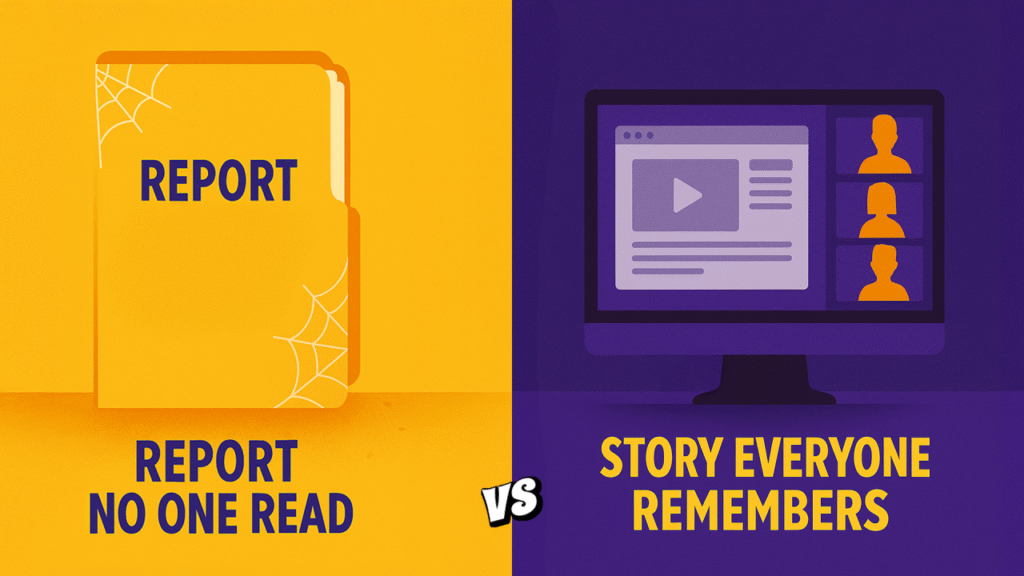
This article is part of my series, “What UX Courses Didn’t Teach Me (But Real Research Did).”
Over the next few days, I’m sharing five essential UX research skills that I didn’t fully learn from certifications or bootcamps—only from real-world projects, messy data, and unexpected conversations with users.
Each day, I’ll break down one skill, the lesson behind it, and what actually makes a difference when you’re practicing UX research in the wild.
Skill #5: Writing Reports vs. Telling Stories That People Remember
When I started sharing research findings, I believed the data would speak for itself through organized reports and concise summaries. However, I quickly realized that most stakeholders weren’t engaging. It became clear that:
People connect with stories, not just information.
My reports lacked emotional appeal and often went unnoticed. Now, I treat reports like products, focusing on real-world use by incorporating:
- Brief user quotes
- Powerful visuals illustrating journeys
- Video clips capturing genuine emotions
Instead of lengthy documentation, I hold live sessions to walk stakeholders through findings, share examples, and invite questions. I now create honest videos that showcase authentic user experiences, rather than quick walkthroughs.
Because, in the end, stats tell you what happened.
Stories tell you why it matters.
Data informs. Stories persuade.
Saturday, I’ll publish the whole article, bringing everything together into one complete story: the real UX research skills no course fully prepares you for.
